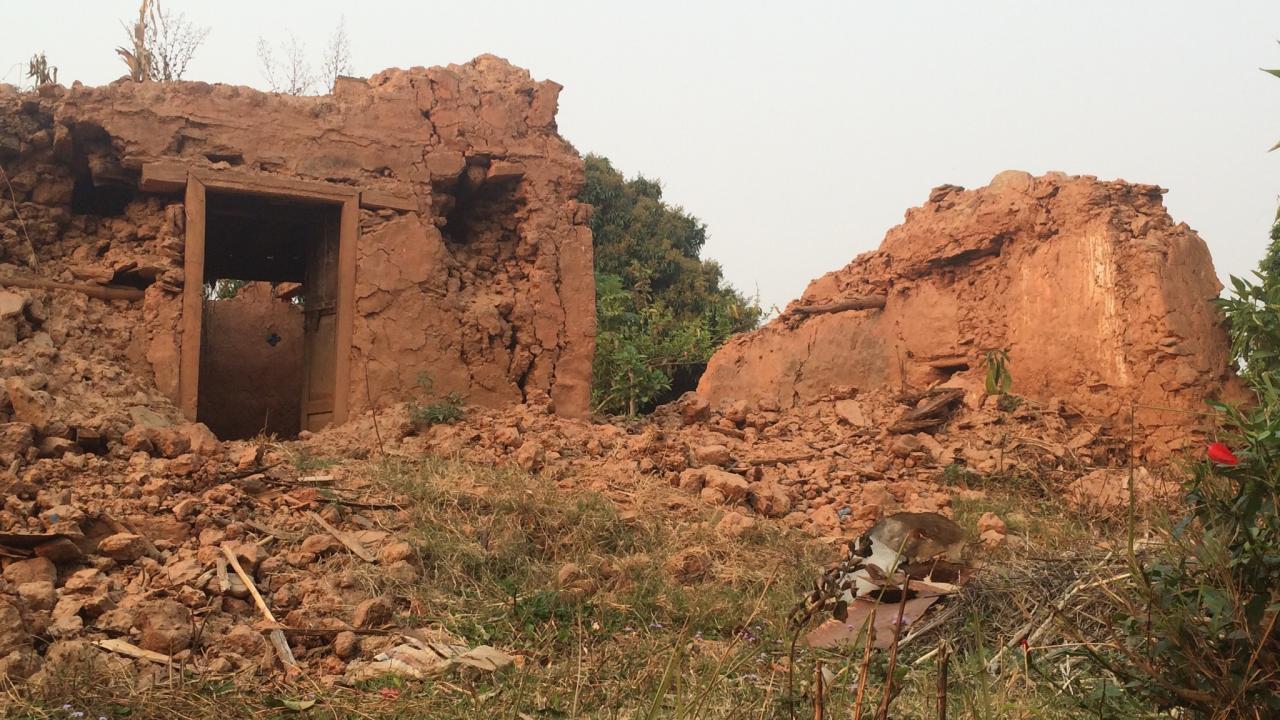
Just before noon on April 25, 2015, a catastrophic 7.8 magnitude earthquake - the “Gorkha” earthquake - shook Nepal. The earthquake killed nearly 9,000 people and injured more than 21,000. Entire villages were flattened. Many more lost their homes and their livelihoods. Aftershocks continued to rattle the already decimated region, hindering rescue and relief efforts. A major aftershock occurred on May 12, with a magnitude of 7.3, which killed hundreds and injured thousands more.
 Prior to the earthquakes, researchers supported by the Feed the Future Innovation Lab for Assets and Market Access were working with Heifer International in Nepal to conduct a rigorous impact evaluation of Heifer’s traditional package of interventions in the country, including the well-known asset transfer program, a social capital development intervention, and a human capital development intervention. In the wake of the earthquake, Heifer Nepal deployed a 3-fold response: immediate relief, livestock-related relief, and implementation of a revolving fund that established interest free loans to affected Heifer beneficiaries. The AMA Innovation Lab and its affiliated researchers are now working with Heifer Nepal to evaluate the impact of this third component.
Prior to the earthquakes, researchers supported by the Feed the Future Innovation Lab for Assets and Market Access were working with Heifer International in Nepal to conduct a rigorous impact evaluation of Heifer’s traditional package of interventions in the country, including the well-known asset transfer program, a social capital development intervention, and a human capital development intervention. In the wake of the earthquake, Heifer Nepal deployed a 3-fold response: immediate relief, livestock-related relief, and implementation of a revolving fund that established interest free loans to affected Heifer beneficiaries. The AMA Innovation Lab and its affiliated researchers are now working with Heifer Nepal to evaluate the impact of this third component.
The revolving fund sought to provide communities and individuals with flexibility and ownership to identify their own most pressing needs for productive investments, and allow them to invest accordingly. This was done with the goals of improving both short-term and long-term recovery, and to reduce long-term dependency on aid.
The Research Questions
The evaluation addresses several questions about the revolving fund:
- Does the transfer make Heifer beneficiaries more resilient? Do households who received the transfer fare better, in the wake of the earthquake, than similar households who did not receive the transfer? Are they able to rebuild a sustainable livelihood? Does the transfer help households avoid costly coping strategies?
- How did households spend the money? Do they use the transfer for productive investment or for temporary basic needs? Based on their choices, does the transfer improve welfare in the short run and/or long run?
- Does the revolving fund “revolve” as intended? What are the repayment rates? Who repays, who defaults? How is the revolving fund being reinvested?
The Evaluation
For this evaluation, researchers will take advantage of previous research efforts in the areas affected by the earthquakes. Researchers have been able to identify the following groups:
- beneficiaries of traditional Heifer interventions
- beneficiaries of traditional Heifer interventions AND the revolving fund
- a control group, that received neither benefits
Comparing outcomes of groups 1 and 2 will illustrate the impact of the revolving fund for a typical beneficiary. Since we might expect Heifer beneficiaries to be more resilience in the face of disaster, comparing groups 1 and 3 will allow researchers to see the impact of the traditional Heifer program on resilience. Finally, comparing groups 2 and 3 will indicate the effects of both interventions compared to not being a beneficiary at all.
Researchers will seek to evaluate the impact of the revolving fund on myriad outcomes, including investment-related activities, resilience and coping strategies, income, productive assets, consumption, nutrition, food security, women’s empowerment, and aspiration.
The 2016 surveys will evaluate the one-year post-earthquake impacts of the fund, and assess how funds are spent. A second follow-up survey will be necessary in 2018 to assess the “revolving” nature of the fund, including repayment rates, community-level investments, etc.
Through this study researchers will better understand risk coping and resilience in the wake of a devastating natural disaster - particularly whether timely access to small loans improves resilience in these types of situations, and whether such loans can be used to rebuild sustainable livelihoods.
This report is made possible by the generous support of the American people through the United States Agency for International Development (USAID). The contents are the responsibility of the Feed the Future Innovation Lab for Assets and Market Access at UC Davis and do not necessarily reflect the views of USAID or the United States Government.
